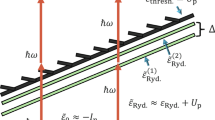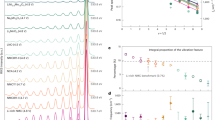Abstract
IT has been shown in a recent report by Strachan and Harris1 that a sputtering plant operated at voltages as low as 8–10 kV. can give rise to X-radiation which can be dangerous to the operator. This observation was made with an apparatus different from the two-electrode system used for the deposition of thin films. Their apparatus consisted of a glass vessel in which positive ions formed in a discharge between an oxide-coated cathode and iron anode were accelerated to a target used for sputtering. It was shown that the X-rays arose from secondary electrons emitted from the target bombarding the walls of the glass envelope. It was possible to operate the main sputtering chamber at a lower gas pressure than normal because the ions were formed in an auxiliary discharge. Thus, the secondary electrons were able to reach voltages comparable to that of the ion-accelerating potential because of their long mean free-path. In a glow discharge the secondary electrons are required for ionizing the gas molecules and their final voltage is not that of the applied potential. Thus it is uncertain whether the results of Strachan and Harris would be directly applicable to a normal two-electrode system with a cold cathode operated at 8–10 kV.
This is a preview of subscription content, access via your institution
Access options
Subscribe to this journal
Receive 51 print issues and online access
$199.00 per year
only $3.90 per issue
Buy this article
- Purchase on SpringerLink
- Instant access to full article PDF
Prices may be subject to local taxes which are calculated during checkout
Similar content being viewed by others
References
Strachan, J. F., and Harris, N. L., Nature, 178, 588 (1956).
Author information
Authors and Affiliations
Rights and permissions
About this article
Cite this article
HOLLAND, L. X-Ray Radiation Hazard using Vacuum Deposition Plant. Nature 180, 89 (1957). https://doi.org/10.1038/180089a0
Issue date:
DOI: https://doi.org/10.1038/180089a0



